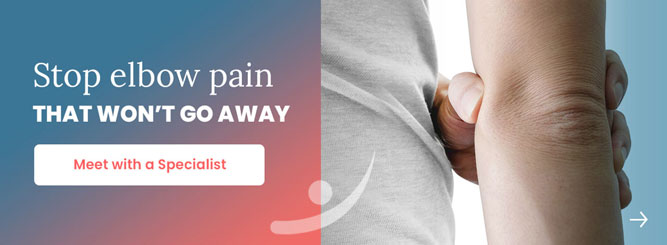If an aching or numbness in your arm has you searching for a way to get forearm pain relief, you could be dealing with pronator syndrome, or pronator teres syndrome (PTS).
This condition can be very uncomfortable and make everyday activities difficult. Fortunately, there are some proven treatments that can help.
Read on to learn more about pronator syndrome, what causes this compressive neuropathy, and how treatment from a specialist can help you get forearm pain relief.
What Is Pronator Syndrome?
Pronator syndrome is a compressive neuropathy of the median nerve. This nerve entrapment is known for causing what many patients describe as a vague aching forearm pain.
Your median nerve is one of three nerves that provide sensory and motor function to your upper arm. It runs the length of your arm and down into your fingers.
What’s the Difference Between Pronator Syndrome and Carpal Tunnel Syndrome?
Carpal tunnel syndrome is another condition caused by entrapment of the median nerve, but at the wrist rather than the elbow.
While both conditions can cause numbness, weakness, and pain, carpal tunnel syndrome tends to get progressively worse and often requires surgery. You can care for pronator syndrome with conservative treatments in most cases.
Causes and Risk Factors for Pronator Syndrome
Pronator syndrome can develop over time in people who do strenuous and repetitive movements in which they rotate their forearms from a palm up to a palms-down position.
The condition is more common in athletes who frequently lift weights, pitch, row, or play racquet sports like tennis. It also occurs in workers who engage in prolonged use of torsion tools (e.g., mechanics and carpenters) and people who are regularly involved in activities that require forceful, repetitive pronation movements, such as ladling food, cleaning dishes, bartending/pouring drinks, carrying large piles of books, etc.
People with hypothyroidism or diabetes also have an increased risk for nerve problems such as pronator syndrome.
What Does Pronator Syndrome Feel Like?
Symptoms of pronator syndrome can occur at any time but are often worse when gripping with the hand or twisting the arm.
The most common symptoms of pronator syndrome include:
- Aching, Tenderness, or Soreness in the Forearm
- Pain That Radiates Down the Arm Into the Wrist and Hand
- Numbness or Tingling in the Thumb, Fingers, and Wrist
- Weakened Hand Muscles
- Difficulty Gripping
Treatments That Provide Forearm Pain Relief
Some patients with pronator syndrome can get forearm soreness relief with conservative forearm pain treatment.
Some of the nonsurgical pronator syndrome treatments your specialist may first recommend include:
- Rest and Activity Modification
- NSAIDs (e.g., Motrin, Advil, Aleve)
- Corticosteroids (to Reduce Inflammation and Ease Discomfort)
- Splints
However these treatments have an unreliable efficacy and forearm pain, numbness, and weakness may persist despite any of these interventions, even if performed for a prolonged period of three to six months.
Pronator Release Surgery
Unfortunately, patients may not get forearm pain relief with conservative treatment. In these cases, an upper extremity specialist may recommend pronator release surgery to relieve forearm pain.
During pronator release surgery, a surgeon makes a small incision at the elbow crease and decompresses the nerve at the entrapment area. The patient will wear an arm splint for a few weeks after surgery, and physical therapy is typically prescribed for a few months to help with recovery.
The outcomes of this surgical treatment are very good, and the procedure will relieve forearm pain in most cases, along with frequently improving associated numbness and weakness.
Get Forearm Pain Relief at IHTSC
Pain and weakness in your arms or hands shouldn’t keep you from enjoying life. Indiana Hand to Shoulder Center upper extremity specialists will work with you to create a customized pronator syndrome care plan for forearm pain relief.
Request an appointment online or call us at (317) 751-5904.

You Might Also Like: